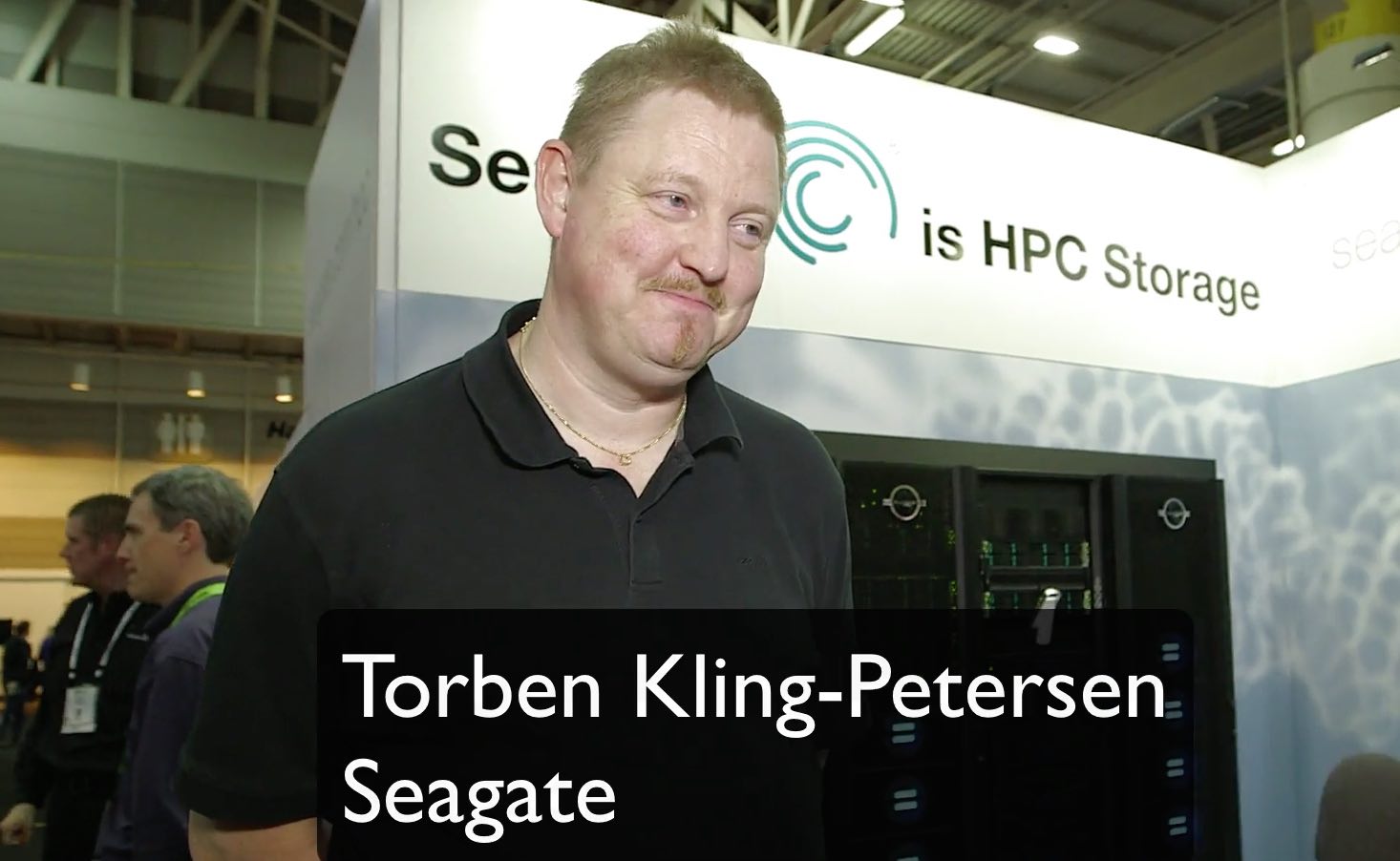In this video from SC14, Torben Kling-Petersen from Seagate describes an upcoming deployment of a 55 Petabyte Lustre file system in Hamburg, Germany. The ClusterStor deployment will be the most energy-efficient file system of its kind in the world upon installation.
Full Transcript:
insideHPC: I wanted to ask you, I heard some rumblings about a really big deal in Germany that you’re working on, some pretty tough business with storage and IO. What can you share?
Torben Kling-Petersen: Well, that’s not what it was supposed to be that official yet, but yes we are working on a 55 petabyte single name space, file system for the German climatology department. Honestly, at this point in time it’s the biggest file system ever built in the lustre file system type. It is based on Lustre 2.5 with all the new bells and whistles, distribution name space service, etcetera. And more importantly, it’s with a new partner of ours which is Bull. Which is you know, a first for us, but it is a very interesting system. The reason they chose us over anybody else in the marketplace is that this is a data center in downtown Hamburg. They have a total max capacity from a power point of view of 1.3 megawatts. And they need a 3 Petaflop system and a 55 Petabyte storage system.
Now, in order to get that to work, you need the most energy efficient system in the world and we’re pretty much, at this point in time.
insideHPC: So energy efficiency because they had a power ceiling, and they probably couldn’t go on more than that, huh?
Torben Kling-Petersen: Exactly. They really have that power ceiling because as I said, it’s in a residential area downtown of Hamburg where they just can’t get more power. We seem to be the only vendor in the marketplace that can actually deliver that efficiency.
insideHPC: Well, besides that though, there’s got to be a lot of IO requirements and density, right? These things that you guys were always known for when you were Xyratex.
Torben Kling-Petersen: Right. We’re still playing on that same concept here, so we have a 55 petabyte system that would be in a total of about–I think in the last math I did was about 23 racks, which is kind of in a class of its own, delivering more than half a terabyte per second throughput. So, 560-570 gigabytes per second, which is not leading by any choice, but for a system this size, that’s a fairly impressive step. So it will be not the fastest device at the moment on earth, it will be one of the largest ever developed, but more importantly, it will be the most energy efficient ever developed.
insideHPC: Wow. When does it get deployed, can you tell me?
Torben Kling-Petersen: Let’s put it like that. I will be spending a lot of time in Hamburg starting in January.
See our Full Coverage of SC14. * Sign up for our insideHPC Newsletter.





LLNL built a 55PB lustre filesystem a few years ago: http://zfsonlinux.org/docs/LUG12_ZFS_Lustre_for_Sequoia.pdf
Hi all, heard a comment about the Sequoia filesystem being 55 PB and built several years ago. That is indeed true but that was 55 PB RAW and we’re talking about 55 PB USABLE. In total we’re building a system with almost 69 PB RAW.
Guess I should have bee more clear.
Merry Xmas everyone.